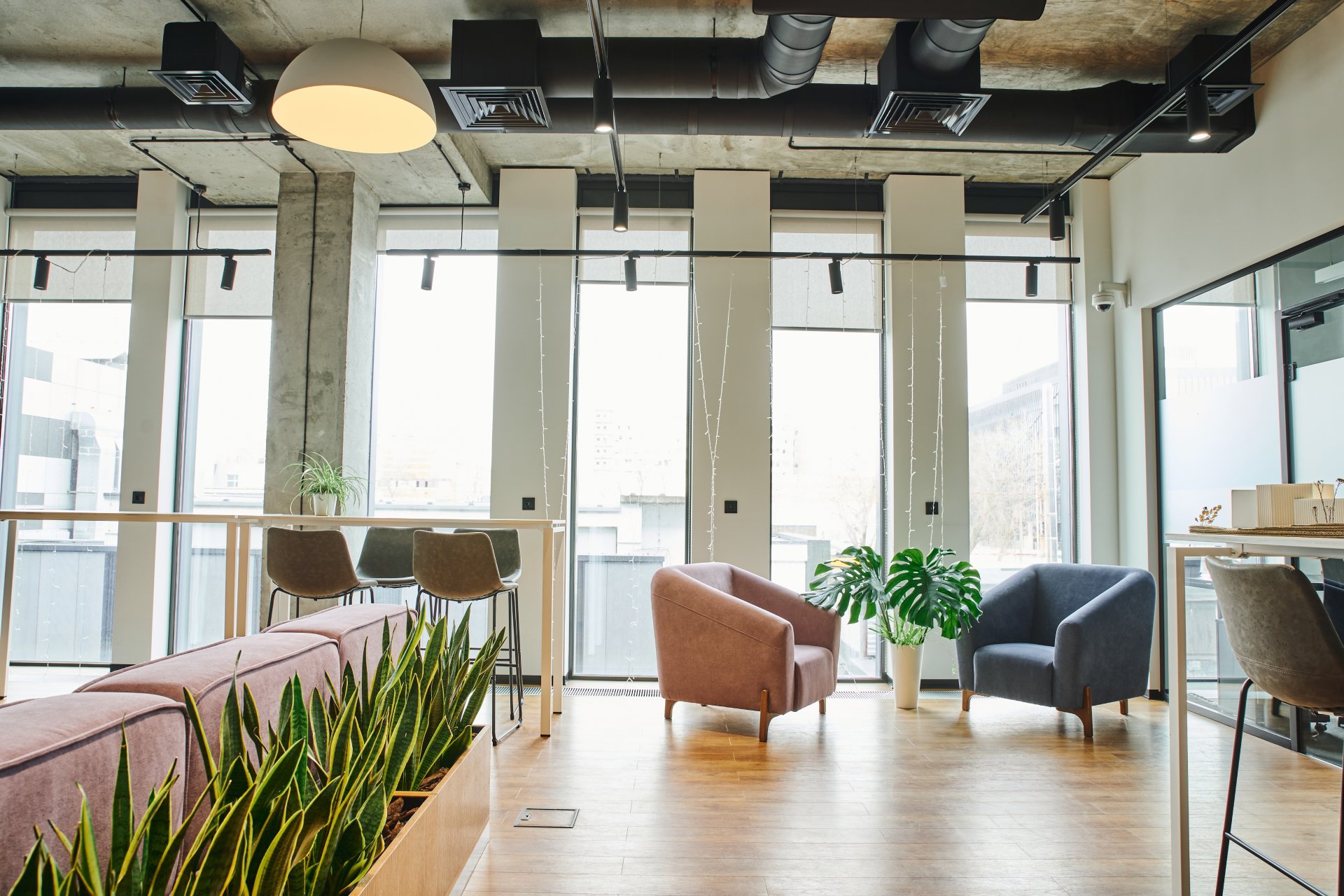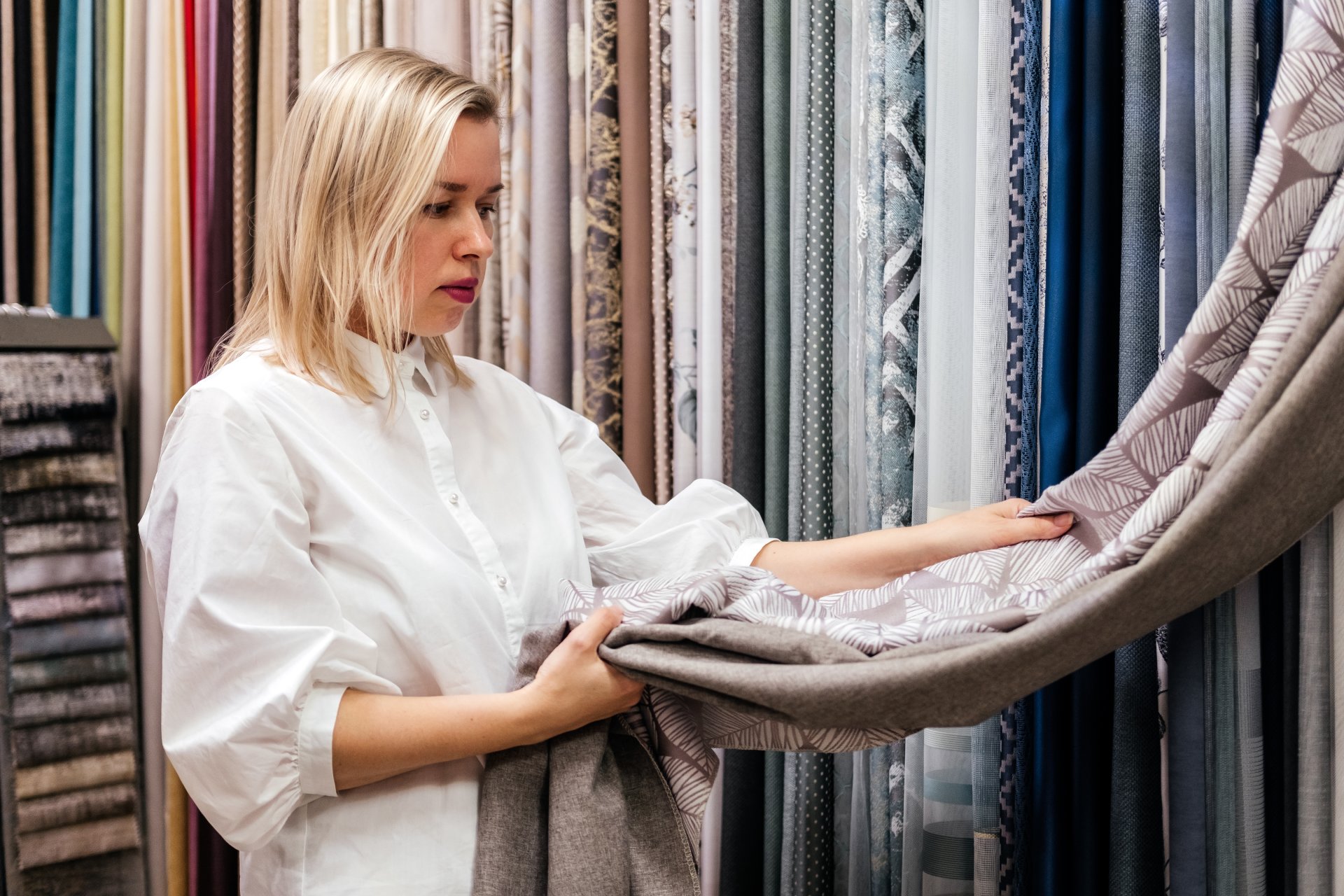From the calm minimalism of Japandi to the breezy elegance of Mediterranean and Coastal interiors, today’s most-loved design styles all have one thing in common—natural light, simplicity, and a connection to the environment. And nothing ties these interiors together quite like the right window treatments.
Custom curtains play a powerful role in shaping the atmosphere of a space. For interior designers, retailers, and curtain installation specialists, understanding how to match curtain fabrics, headings, and hardware to each interior style is key to creating a cohesive and high-end finish. Whether your clients are renovating a beachside home or designing a Japandi-inspired inner-city retreat, the right curtains are essential to enhancing the mood, functionality, and flow of each room.
Here, we explore the design principles behind these three popular styles and offer tailored curtain ideas to bring them to life—using expertly crafted, Australian-made custom curtains and track systems.
Japandi Style: Clean Lines, Soft Textures, and Quiet Harmony
Japandi is a fusion of Scandinavian and Japanese aesthetics, combining clean lines, a neutral palette, and a deep respect for craftsmanship and nature. The result is an interior style that feels calm, minimal, and highly intentional—without ever feeling cold or sterile.
Curtain Fabric Ideas for Japandi Interiors
1. Natural Linen and Cotton Blends
Neutral-toned linen or cotton-linen blends are ideal for Japandi spaces. Think soft greys, stone, ivory, oatmeal, and muted sage. The texture should be subtle, never glossy, with a slightly irregular weave that nods to the organic and imperfect.
2. Sheer Layers for Light Control
Layering is essential. Start with natural sheer curtains to filter light and provide privacy during the day, then add a heavier curtain or discreet blockout lining behind for the evenings. The layered look creates softness and enhances the tactile nature of Japandi interiors.
3. Recycled and Sustainable Fabrics
Japandi design celebrates conscious living. Recycled fibres or OEKO-TEX® certified fabrics support eco-friendly goals and complement the understated luxury of this style.
Headings and Tracks
Wave fold headings on ceiling-mounted recessed tracks are the go-to choice for Japandi interiors. The soft, undulating folds create visual rhythm while maintaining the clean lines this style demands. Tracks should be discreet—white or colour-matched to the ceiling—and allow curtains to glide effortlessly from wall to wall.
If motorisation is included, choose a silent system to maintain the peaceful ambience.
Styling Tips
- Extend curtains wall-to-wall for a unified, uninterrupted look.
- Avoid pelmets or decorative rods—Japandi is about simplicity and concealment.
- Floor pooling is acceptable in bedrooms but keep drops precise in main living areas.
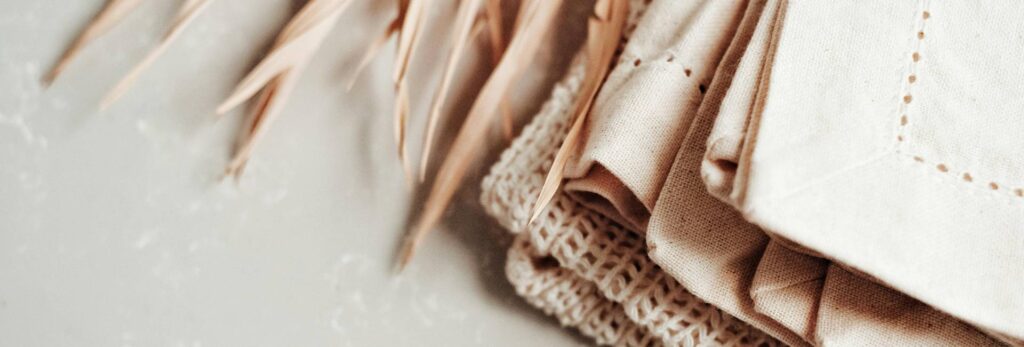
Mediterranean Style: Light, Warmth, and Timeless Comfort
Mediterranean interiors draw from sun-soaked coastal homes in Spain, Italy, and Greece. This style blends old-world charm with a laid-back atmosphere—balancing rustic textures, earthy colours, and architectural elements like arched windows, stucco walls, and timber beams.
Curtain Fabric Ideas for Mediterranean Interiors
1. Lightweight Linen and Voile
Natural light is everything in Mediterranean homes. Choose unlined or lightly lined curtains in soft linen or cotton voile to keep the space airy. White and ivory are classic choices, but dusty terracotta, muted mustard, olive, or ocean blue also work beautifully.
2. Embroidered or Textural Weaves
While Mediterranean curtains are often simple, they’re not flat. Introduce interest with gently embroidered fabrics or those with a slubbed or woven texture—creating a relaxed, artisanal feel.
3. Blockout Options for Harsh Western Light
In warmer climates or west-facing rooms, consider combining sheers with a secondary blockout curtain. Use a double track system so layers can be moved independently depending on the light.
Headings and Tracks
Rod pocket and pinch pleat headings are common in traditional Mediterranean interiors, especially when paired with wrought iron rods. For a more contemporary take, double pinch pleats on custom tracks offer elegance without fuss.
Tracks can be face-mounted for visibility or recessed into the ceiling for a cleaner look in more modern or renovated Mediterranean homes. Bronze or dark-coloured hardware can be used to echo traditional materials.
Styling Tips
- In older homes, allow curtains to skim the floor rather than pool.
- For a rustic villa aesthetic, consider tiebacks with tassels or rope.
- Use soft pleats or hand-sewn headings for a bespoke, handcrafted feel.
Coastal Style: Breezy, Relaxed, and Sun-Drenched
Australian Coastal style is all about embracing natural light, sea breezes, and an easy connection to the outdoors. Whether it’s a classic Hamptons-inspired look or a more modern beach house aesthetic, curtains in a coastal home should enhance the light and never weigh down the room.
Curtain Fabric Ideas for Coastal Interiors
1. White and Neutral Sheers
The coastal palette is light, natural, and often monochromatic. Crisp white sheer curtains are a must, offering daytime privacy while maintaining airflow and softening harsh sunlight. Pale greys, creams, or soft sandy tones also work well.
2. Stripes and Soft Patterns
Vertical stripes in blue or taupe can create a subtle nautical feel without going overboard. Choose soft, watercolour-inspired patterns for a contemporary coastal twist.
3. UV-Resistant and Durable Fabrics
Sun exposure can be extreme in coastal homes, so it’s essential to use high-quality fabrics with UV protection to prevent fading and fibre damage. Australian-made curtains are ideal, designed for local conditions.
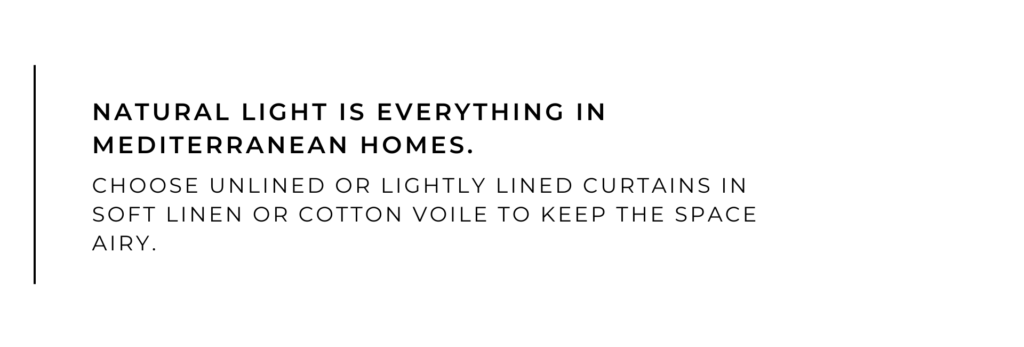
Headings and Tracks
S-fold or wave fold curtains are very popular in coastal interiors, especially when paired with sheer fabrics. These look best on ceiling-mounted or discreet double tracks, allowing sheers and heavier drapes to function independently.
For homes with sliding doors to outdoor areas, full-width tracking with stack-back clearance ensures easy movement and unimpeded views.
Styling Tips
- Extend sheers across entire walls to create a billowy, relaxed look.
- Use a double-track system with blockouts in bedrooms to ensure flexibility.
- Avoid overstyling—coastal homes are about informality and ease.
Fabric Performance: Choosing the Right Curtain for Climate and Orientation
While style is often the first consideration when specifying curtains, fabric performance should never be overlooked—especially in homes where design meets function.
Japandi, Mediterranean, and Coastal interiors are not only visual styles but are also shaped by their typical climates and the way each space interacts with natural light, airflow, and heat.
For interior designers and curtain installers, understanding how to match fabric choice with both aesthetic intent and environmental demands is key to achieving long-lasting, high-performing results.
Coastal Homes
In coastal homes, particularly those with expansive glazing or ocean-facing aspects, exposure to harsh sunlight, humidity, and salt air is a constant challenge.
Curtains here should prioritise durability and UV resistance. Sheer fabrics such as lightweight linen-look polyesters or high-performance voiles with UV-stable fibres are ideal for north- and west-facing windows, allowing light diffusion without rapid fading or fibre degradation.
It’s also important to choose linings or blockouts designed to withstand constant sun exposure, especially in bedrooms or living areas where privacy and insulation are required.
Mediterranean-Inspired Interiors
These are often found in warmer, drier climates, and so they favour breathable and tactile materials.
Here, cottons and lightweight linens work beautifully to reflect the relaxed, rustic nature of the style while allowing ventilation in kitchens, dining rooms, and shaded courtyards.
In west-facing areas where afternoon sun can become intense, adding a light blockout or choosing a heavier weave can help regulate indoor temperatures without sacrificing texture or warmth.
Japandi Homes
For Japandi homes, which typically lean into a cooler palette and more minimalist layout, the focus is on comfort and serenity.
Bedrooms and lounge areas benefit from curtains with thermal linings to provide insulation and a soft cocooning effect—especially valuable in southern states and alpine regions.
Natural fibre blends such as cotton-linen or recycled textiles in heavier weights pair beautifully with the pared-back look while contributing to the overall energy efficiency of the home.
Curtain Orientation
Curtain orientation is another vital factor. East-facing windows catch the gentle morning light, requiring minimal shading, while west-facing windows often need heat protection. South-facing rooms are cooler and dimmer, so lighter-weight curtains or layered sheers help maintain openness and draw in natural light.
Ultimately, the most successful curtain designs for these interior styles are those that harmonise visual impact with smart material choices. Designers and installers should always consider fabric composition, weave density, lining options, and how the curtain will respond to the space’s exposure—ensuring that every window treatment not only looks the part but performs exceptionally well in its environment.
Custom Curtain Solutions for Designers and Retailers
While off-the-shelf curtains may suffice in some applications, these design-led interiors deserve precision and performance. Curtain professionals and designers working within Japandi, Mediterranean, or Coastal briefs should prioritise:
- Made-to-measure dimensions for floor-to-ceiling coverage
- Lining and interlining options tailored to orientation and thermal requirements
- Track systems that match architectural and aesthetic intentions
- Fabric samples that allow clients to view colour and texture in context
From motorisation to hand-sewn finishes, the details matter.
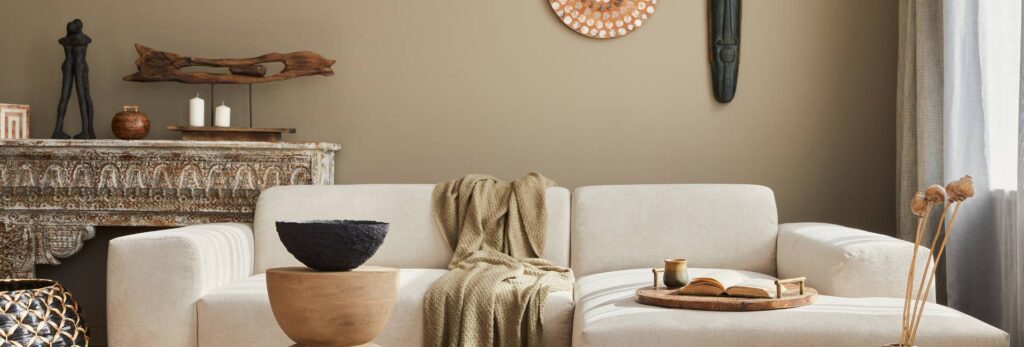
Quality Curtains, Designed for Style and Function
Japandi, Mediterranean, and Coastal interiors each offer their own unique design language—but what connects them is the power of thoughtful materiality, soft textures, and natural light. Curtains aren’t just practical additions to these homes—they’re core to the visual flow, temperature control, and overall mood of a room.
For interior designers and retailers, investing in Australian-made custom curtains means confidence in quality, performance, and finish. With the right track systems, fabric choice, and heading styles, you can enhance these sought-after aesthetics while delivering long-lasting, functional results.
MAC Window Fashions: Crafted for Design-Driven Interiors
At MAC Window Fashions, we work closely with interior designers, curtain retailers, and installers to supply Australian-made custom curtains and track systems that bring design visions to life.
We offer a wide selection of high-performance and design-led fabrics from leading brands including Warwick, Mokum, James Dunlop, Zepel, Hoad and Basford Brands—many featuring recycled materials, natural fibres, and soft, tactile finishes ideal for Japandi, Mediterranean, and Coastal interiors.
Our made-to-measure curtain service ensures perfect drops and flawless finishes, with options including wave fold, pinch pleat, and tailored headings. Our track systems—including motorisation-ready and recessed options—are precision-engineered for performance and smooth operation.We provide free curtain fabric samples and ship our Australian-made curtains and our curtain track systems nation-wide. Contact us now for more information or sign up as a retail partner today!



